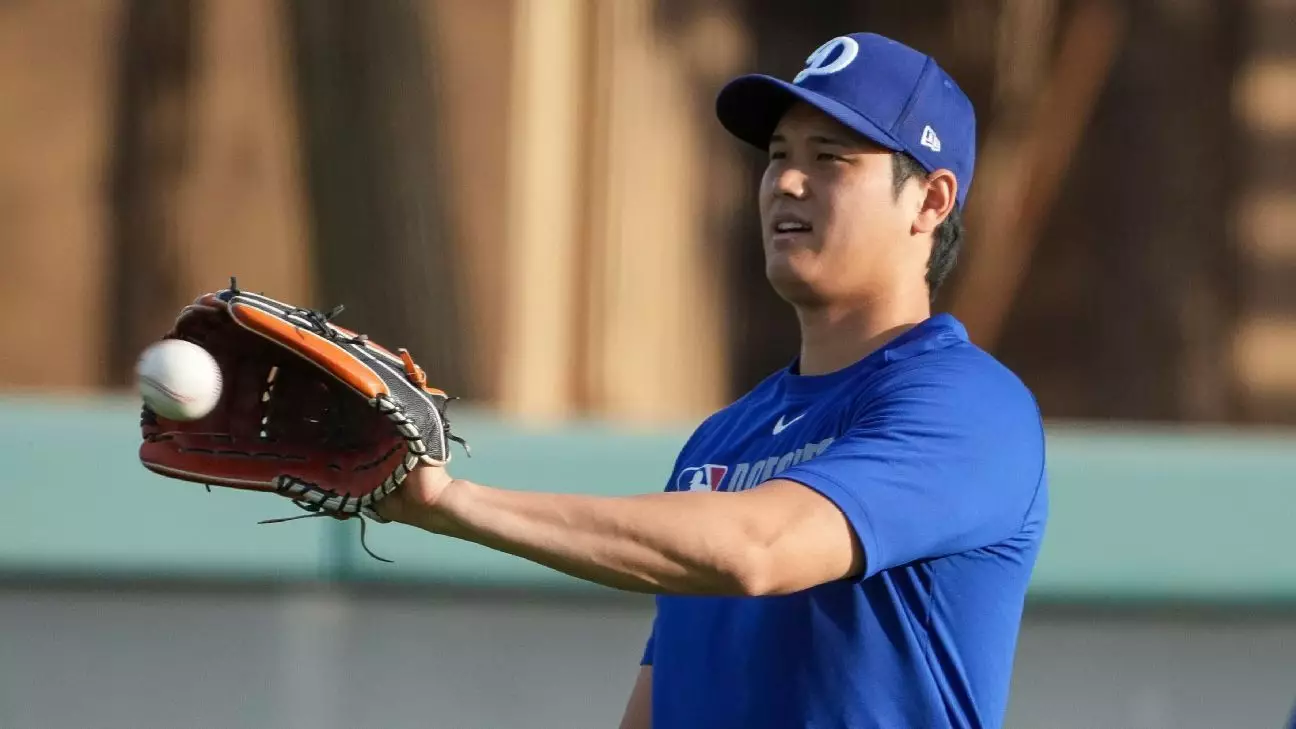Shohei Ohtani, the phenom who has redefined the standards of what a baseball player can achieve, is gradually working his way back to pitching for the Los Angeles Dodgers. Following a month-long hiatus from throwing off a mound, Ohtani took his first bullpen session recently, revealing a cautiously optimistic outlook regarding his recovery. The anticipation surrounding his return underscores the significant impact he has had on the game—both as a pitcher and a hitter. His presence not only elevates his team but also captivates fans who eagerly await the return of this two-way superstar.
Balancing Act: Health Over All
While there’s much excitement surrounding Ohtani’s return, Dodgers manager Dave Roberts has made it clear that the team must prioritize the player’s health. After undergoing surgery on his right elbow last September and additional shoulder surgery in November, the need for a methodical approach has never been more urgent. Despite regularly performing long toss during his rehabilitation, his transition back to pitching format must be steadfast and deliberate. Ohtani’s experiences in the past serve as a reminder that rushing the recovery process can lead to further complications, which could jeopardize not just his season, but his career.
Contextual Landscape: Dodgers in Need of Depth
The pitching staff for the Dodgers is promising yet comes with risks. With an influx of new talent like Blake Snell and Roki Sasaki, the rotation seems fortified, yet the Dodgers have faced numerous injury challenges in their starting pitchers over recent seasons. Adding Ohtani to the mix is more than just about filling a position; it’s about enhancing the resilience and depth of the Dodgers’ rotation. His addition could very well allow the team to implement a unique six-man rotation, which might prove to be a strategic advantage—particularly if it safeguards the health of their pitchers throughout the grueling season.
The Art of the Comeback
Expectations are high for Ohtani, who is entering the second season of his staggering 10-year, $700 million contract. While many will focus on his past achievements—most notably his record-setting performance that included the first 50-homer, 50-stolen base season—it’s crucial to view the narrative from the perspective of his recovery. Ohtani is not just a transformed athlete; he is a testament to the resilience of performance. His ability to navigate through adversity will not just define this season; it may redefine what fans expect from athletes who face similar hurdles in their careers.
Foundations in Doubt: Dodgers’ Current Performance
As Ohtani works to reclaim his position, the Dodgers are also grappling with their initial games this season. Displaying a mixed performance, Ohtani has shown flashes of his brilliance, with two home runs among his six hits in the opening series. His OPS of 1.286 is indicative of his potential, not just as a designated hitter but as an irreplaceable component for the Dodgers moving forward. However, the larger question remains—what are the capabilities and limits of this team without Ohtani on the mound? His distinct role complicates the landscape of their current lineup and brings inherent tension between the urgency of immediate needs versus long-term health considerations.
Future Prospects: Dodger’s Strategy Moving Forward
With every practice and training session, Ohtani’s influence expands. While Roberts has stated that there is no strict timeline for when Ohtani will resume his pitching duties, the essence of his involvement remains critical. His timing is strategic, not only to his health but also to the overall dynamics of the team. The Dodgers are still a formidable squad with Ohtani as a designated hitter, but the desire to see him pitch again looms large. The balance of recognizing when to lean on Ohtani’s multifaceted skills versus when to hold back for his long-term benefit is a testament to effective team management.
As baseball evolves, the narrative of Shohei Ohtani will undoubtedly shape how current players aspire to navigate the intricate balance between specialization and versatility. His story is one of hope, resilience, and potentially revolutionary change within the sport, making his journey all the more compelling for players and fans alike.


Leave a Reply